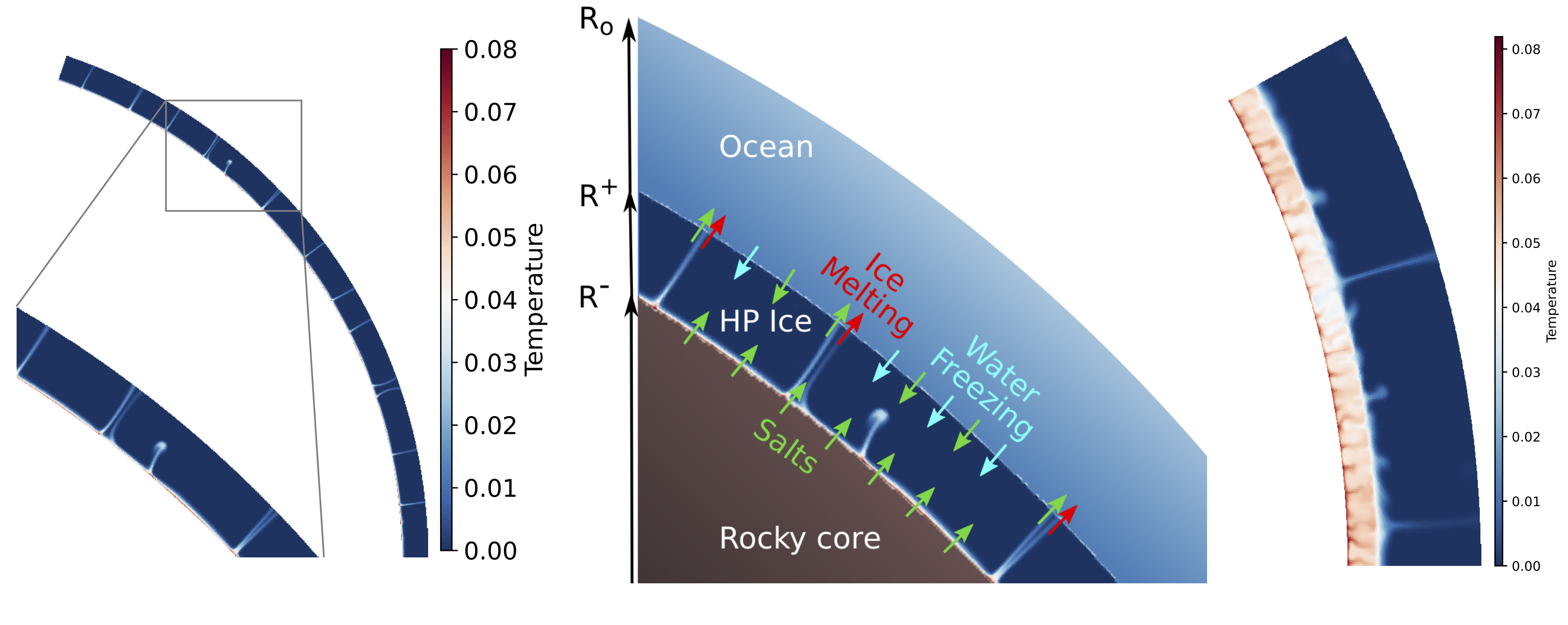Two papers on convection in HP ice layers with implications for habitability of large icy moons
With Laëtitia Lebec, as part of her PhD the PhD she defended last september, we published two papers in Icarus on convection in high pressure (HP) ice layers in large icy satellites and water worlds.
The first paper considers the effect of the solid-liquid phase change on convection in the solid and proposes scaling relationships for the temperature difference across the layer and the velocity at the upper boundary as function of the Rayleigh number. Applications to Titan or Ganymede show that convection in these layers is quite efficient and that the ice is expected to melt, at least partially, in contact with the rocky core.
The second paper adds the effects of salts entering the ice layer from the underlying rocky core. The ice-salt mixture is expected to be denser than pure water ice which could impede convection. This effect is quantified using a buoyancy number which compares the negative buoyancy of salts to the positive buoyancy contribution from temperature variations. For large values of the buoyancy number, a stable layer of salt-rich ice develops at the bottom of the ice layer but convection proceeds largely unaffected in the upper salts-poor layer, with a limited but significant entrainement of salts from the lower layer to the overlying ocean.
Full citations:
Lebec, L., Labrosse, S., Morison, A., and Tackley, P. J. Scaling of convection in high-pressure ice layers of large icy moons and implications for habitability. Icarus, 396:115494, 2023.
Lebec, L., Labrosse, S., Morison, A., Bolrão, D. P., and Tackley, P. J. Effects of salts on the exchanges through high-pressure ice layers of large ocean worlds. Icarus, 412:115966, 2024.
